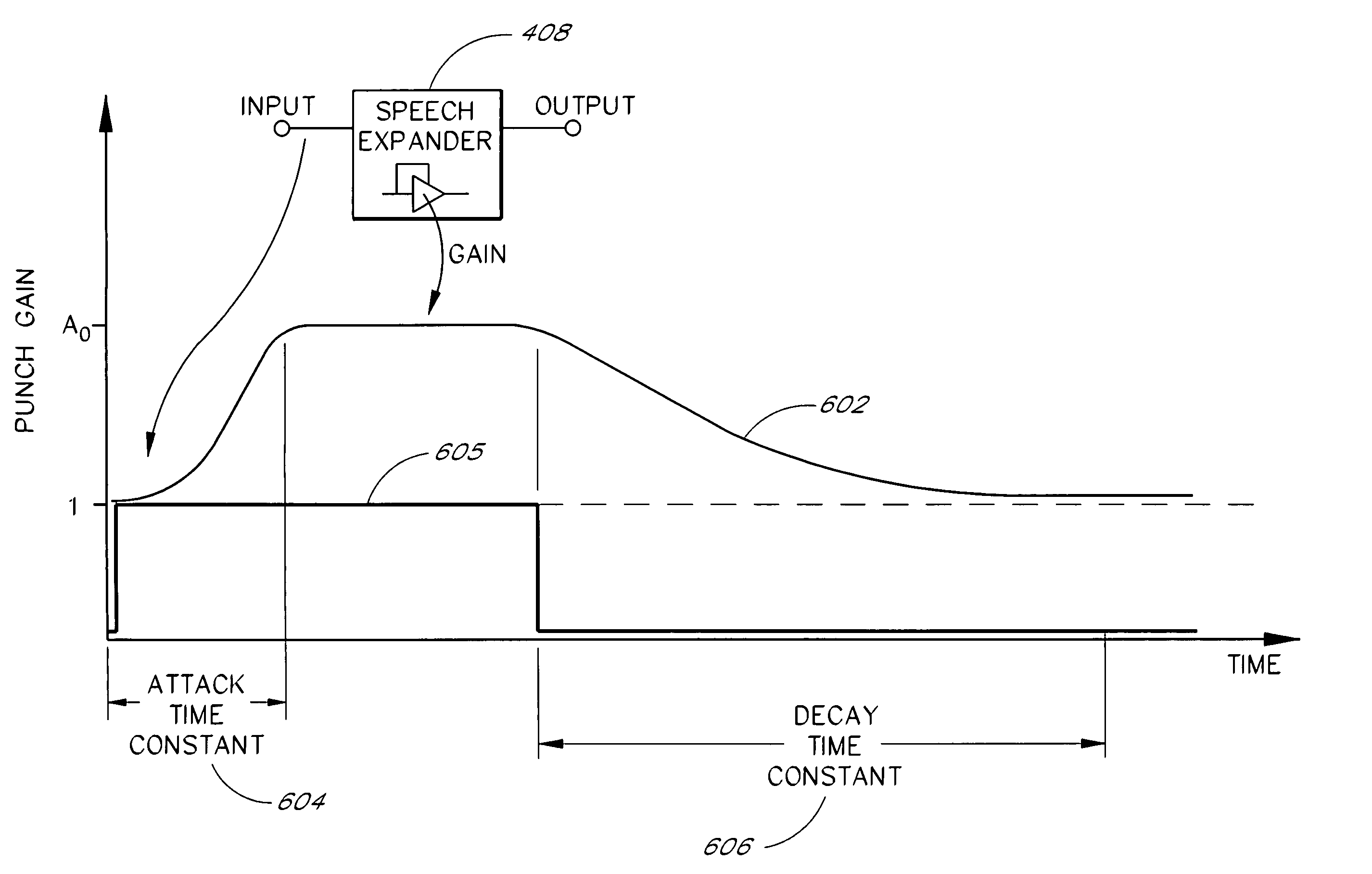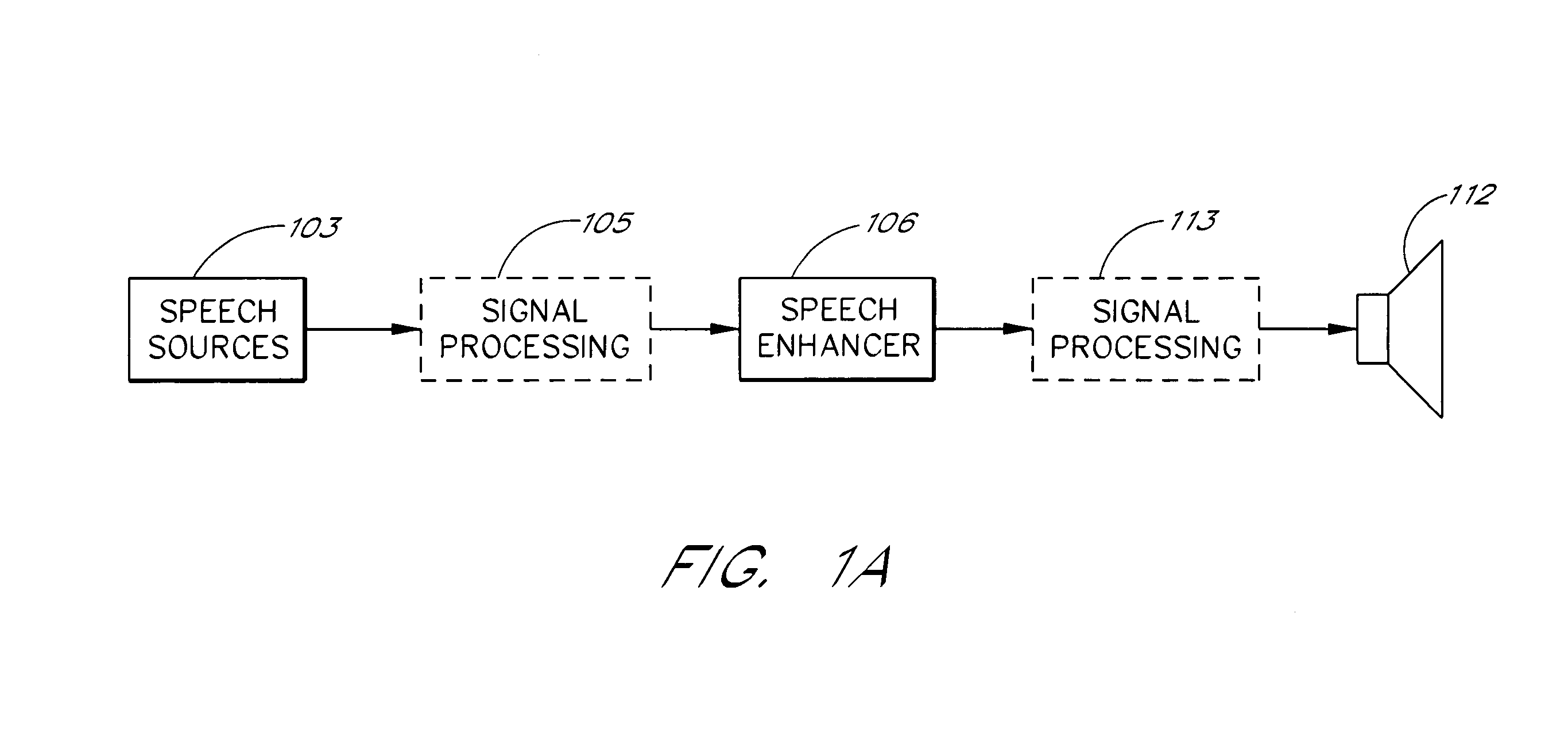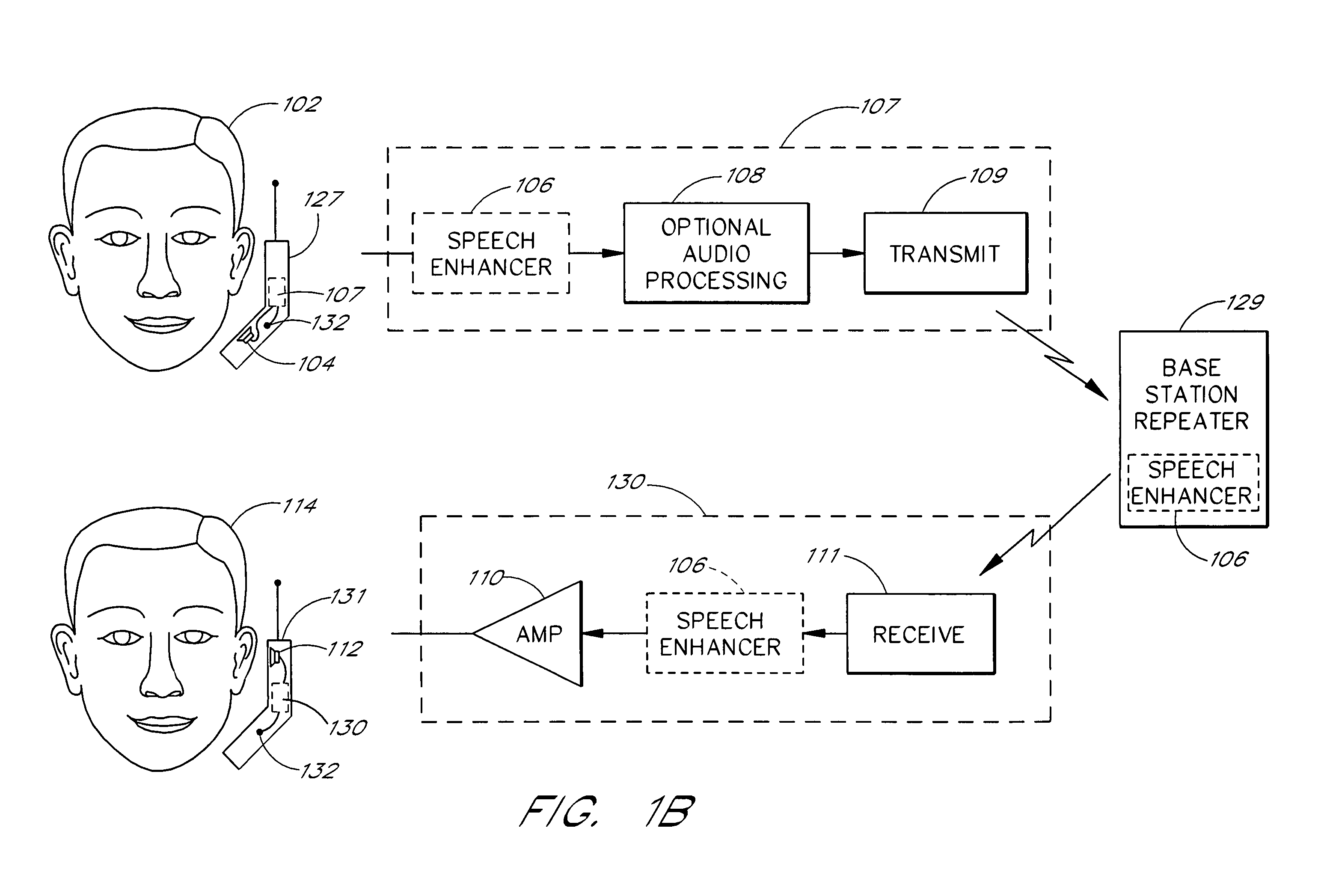[0008]The present invention solves these and other problems by providing improved intelligibility of
voice communication that would otherwise be degraded by noise. In one embodiment, intelligibility of speech is improved by a speech
enhancer that uses an aural filter in combination with a speech expander. The speech
enhancer also improves the intelligibility of speech that is degraded by factors other than noise, such as, for example, speech that is mumbled.
[0010]The input signal to the speech
enhancer is typically a speech signal, such as, for example, the signal from a
microphone, tape
deck,
CD player, etc. When the speech signal is operating at a
low volume level, the speech enhancer provides a
transfer function that is relatively flatter than the
transfer function at high volume levels. For example, when an announcer speaking into the
microphone is talking very quietly, more of the low and
high frequency components of the announcer'
s voice are provided to the listener. This provides the listener with more information in order to help the listener understand the words. Conversely, when the speech signal is operating at high volume levels, the speech enhancer provides a transfer function that produces relatively more
gain in the
middle frequency ranges than in the low and
high frequency ranges. Intelligibility of the speech is enhanced because it is the middle frequencies that contribute most to the intelligibility of speech. At higher volume levels, the lower and higher frequencies merely contribute to the overall sound volume level and thus tend to increase listener discomfort and feedback rather than intelligibility.
[0011]Stated differently, the speech enhancer provides a transfer function that is in many respects, complementary to the transfer function of the human hearing system. By providing a complementary transfer function, the speech enhancer improves intelligibility, and listener comfort, by reducing the
relative volume level of sounds that do not contribute to (or even reduce) speech intelligibility. The speech enhancer may advantageously be used in or in connection with: public address systems; hearing aids; communication devices, including telephones and cellular telephones; audio processors for improving
clarity and / or intelligibility of music, speech or the spoken word; apparatus for use in
processing audio electronic signals consisting primarily of speech to improve intelligibility and / or
clarity; integrated circuits; video monitors; video tuners; stereo receivers and amplifiers; tape decks; car stereos; televisions; portable stereos; boomboxes; stereo processors for use in cinemas; video disc playback and / or recording apparatus; audio playback and / or recording apparatus; home audio-visual recording apparatus;
laser disc players and records; VCRs; digital versatile disk (DVD) players;
digital video tape players; speakers; speaker systems containing a sound
transducer and an integral
amplifier; CD (
compact disc) playback and / or recording devices; motion picture projectors;
cable television receivers and decoders;
remote control units for these goods; computer programs having sound generating capability;
computer software for expanding an audio image generated by speakers for use in the entertainment field; computers; computer sound
processing cards;
industry standard computer interface cards; computer audio processing circuitry;
computer hardware, namely computer diskettes, computer floppy disks, hard discs, CD-ROM discs,
digital video discs,
optical storage discs, and computer
solid-state cartridges; audio and / or audio-visual recordings stored on
magnetic tape or optical media; audio and / or audio-visual prerecorded media containing entertainment material in the form of the spoken word, music and other sounds, namely motion picture film, VCR cassette tapes,
laser discs, video discs, optical discs analog or
digital audio cassette tapes, and analog or
digital video cassette tapes; and the like.
[0012]One embodiment provides for enhancing the intelligibility of voice information, such as spoken words, recorded speech, synthesized speech, and the like, projected into an area of ambient noise from a loudspeaker system that receives an input signal derived from an electrical voice signal representing spoken words. The electrical voice signal may come from a
microphone, a playback device, a
receiver, etc. For convenience, the voice signal is described herein as an electrical signal with the understanding that the electrical voice signal may also be embodied as a sequence of digital values, as in a computer or
digital signal processor. The electrical signal is provided to an aural filter that provides relatively less attenuation of middle (e.g., speech) frequencies of the electrical signal and relatively more attenuation of other frequencies. The filtered signal is provided to a voice expander having a varying
gain.
 Login to View More
Login to View More  Login to View More
Login to View More 


